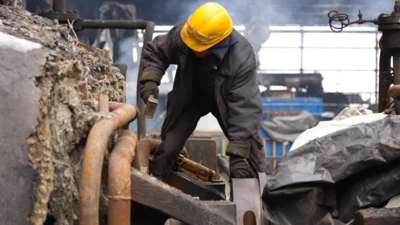We've updated our Privacy and Cookies Policy
We've made some important changes to our Privacy and Cookies Policy and we want you to know what this means for you and your data.
Ice loss causing Arctic to reflect less heat
Image source, EyeWire
Top Stories
- Author, Mark Kinver
- Role, Environment reporter
A loss of snow and ice cover are the main reasons for a reduction in the Arctic's ability to reflect heat, not soot as had been previously thought.
The capacity of the Arctic to reflect heat is determined by something known as the albedo effect.
This is a measurement of how well a surface, such as snow or ice, bounces sunlight back into space.
Scientists say soot is not the major contributor, as levels have dropped recently, while warming has continued.
Top Stories
The findings have been .
The Arctic region has warmed significantly since the 1980s, up to three times as much as the average seen elsewhere across the globe.
Much of this warming has been attributed to the reduction of the surface albedo effect.
When sunlight hits a white surface such as snow and ice, more of it is reflected back into space without warming its surroundings than when light hits a darker surface.
Thus, darker surfaces tend to absorb more heat. As the albedo effect in the Arctic is reduced, there is a positive feedback effect because, as the region warms, more and more ice and snow cover is lost. As a result, more dark areas are left exposed to sunlight.
This results in an amplification in the cycle of warming, a phenomenon that has been described as the Arctic Amplification.
Understanding the Arctic albedo
Top Stories
The team of scientists from the US used satellite data, which stretches back to the early 1980s, to determine the level of the albedo effect in the Arctic.
They found that sea-ice, snow on top of sea-ice and ice on land contributed equally to the region's albedo effect.
Image source, Getty Images
"These three factors contributed almost equally to the reduction of the surface albedo," explained co-author Hailong Wang, an earth scientist from Pacific Northwest National Laboratory in the US.
Within the scientific community, there had been a considerable level of debate over the role of soot blowing up from urban areas to the Arctic. One view was that it played a significant role in the reduction of the albedo effect in the Arctic because the dark soot would absorb more sunlight, thus increasing warming.
Dr Wang and his team considered this in their study: "We tried to quantify that impact as well," he said.
"Soot absorption in snow and ice have had a minimal impact on the reduction of the albedo effect."
He told ґуПуґ«ГЅ News that the study was able to calculate for the first time the impact of snow cover on sea ice - considered to be equal to the albedo effect of sea-ice and terrestrial ice - as a result of the study's modelling.
Causes of warming
The study showed that there was a 1.25%-1.51% per-decade reduction in the surface albedo effect in the Arctic during the springs and summers from 1982 to 2014.
Climate modelling around the globe shows that the warming has lead to an increase in precipitation levels.
Dr Wang say this was true for the Arctic as well. However, he added, the increase in precipitation was mainly rain, not snow despite it being in the northern polar region.
"Snowfall actually has been decreasing as well, so that is a decrease contribution of about 30% to the snow cover reduction," he observed.
Although not covered in the study, one hypothesis is that the reduction in snowfall has been a result of warming in the region.
As the temperature warms, the albedo effect will continue to fall thus generating a positive feedback loop that will result in continual warming until the loop is broken.
Top Stories
More to explore
Most read
Content is not available








